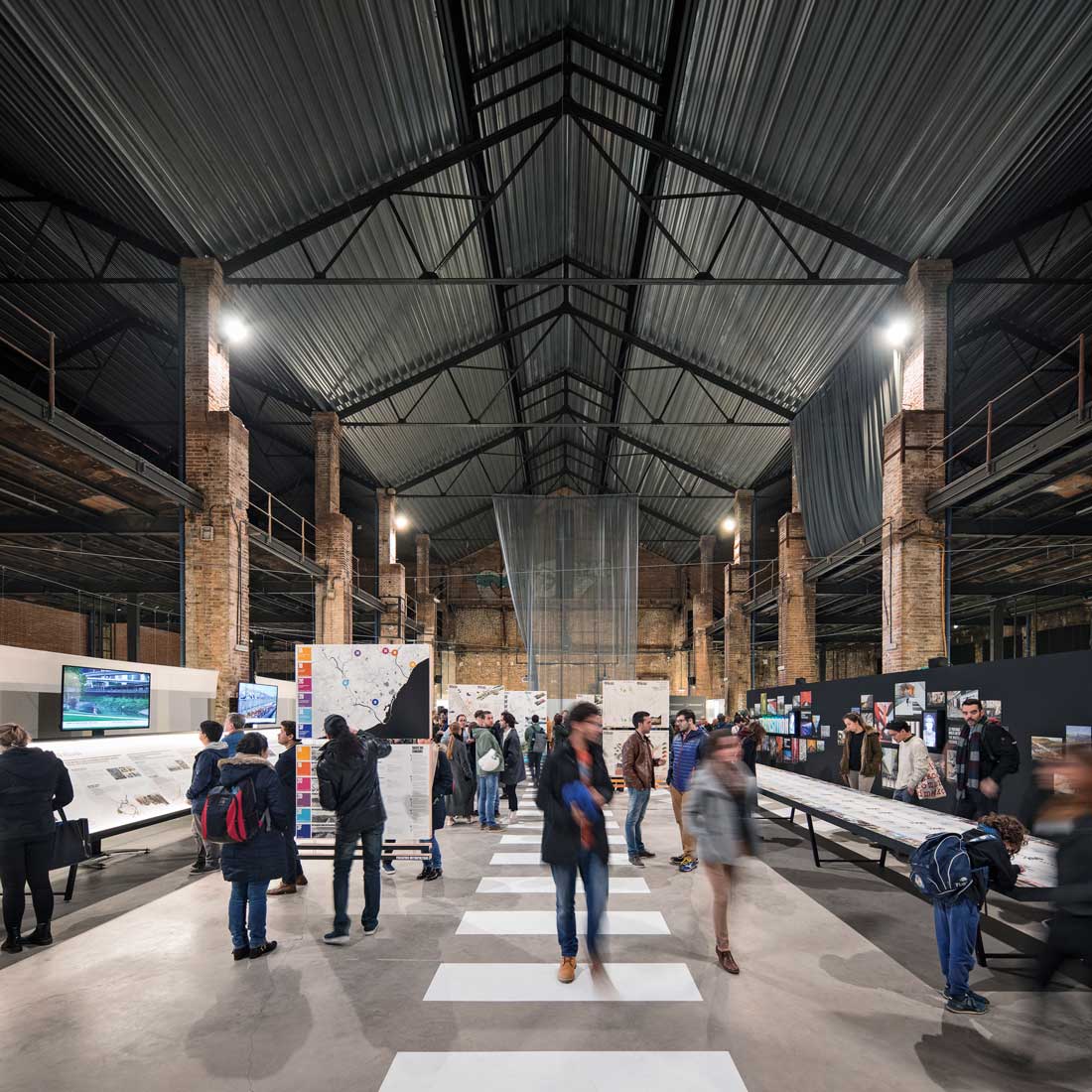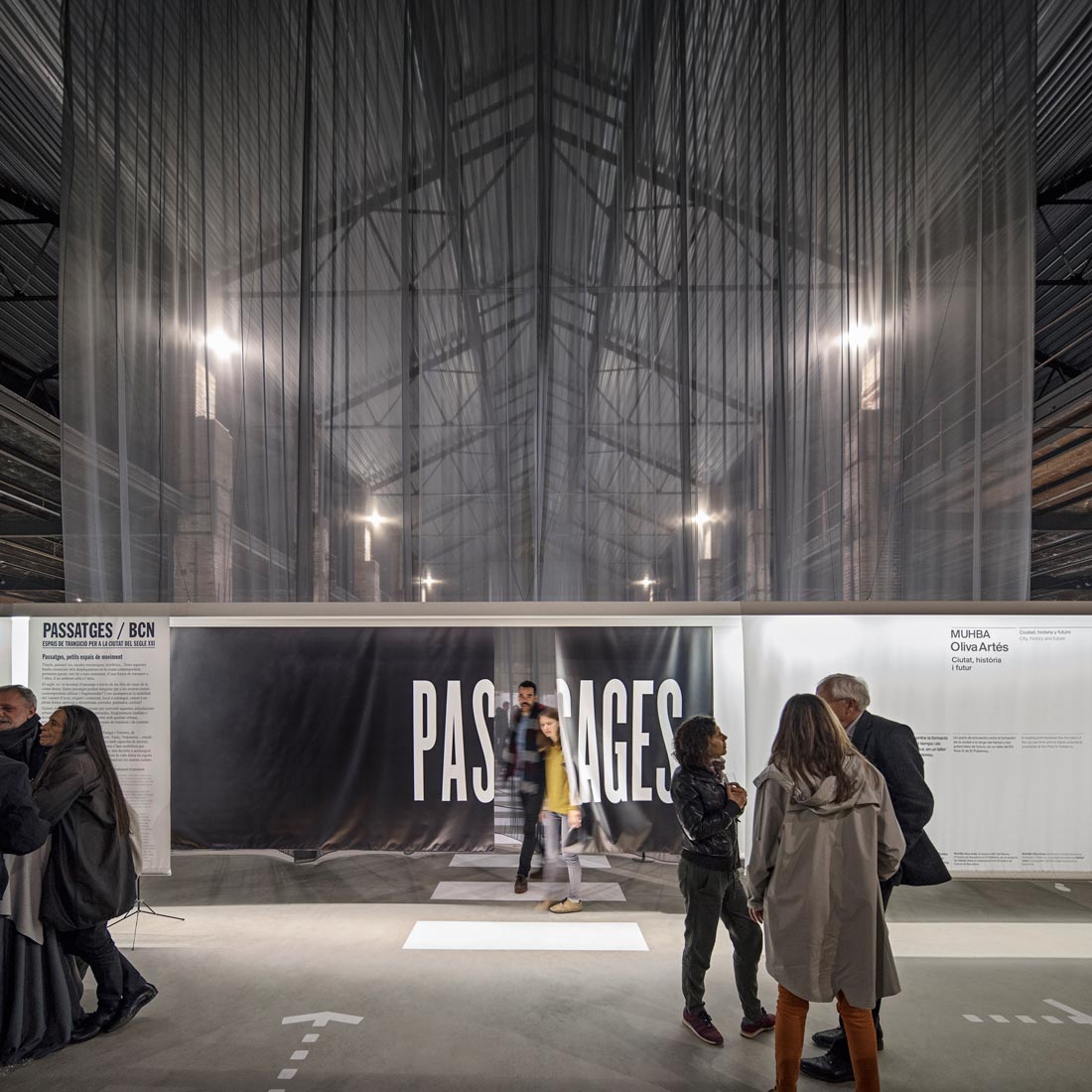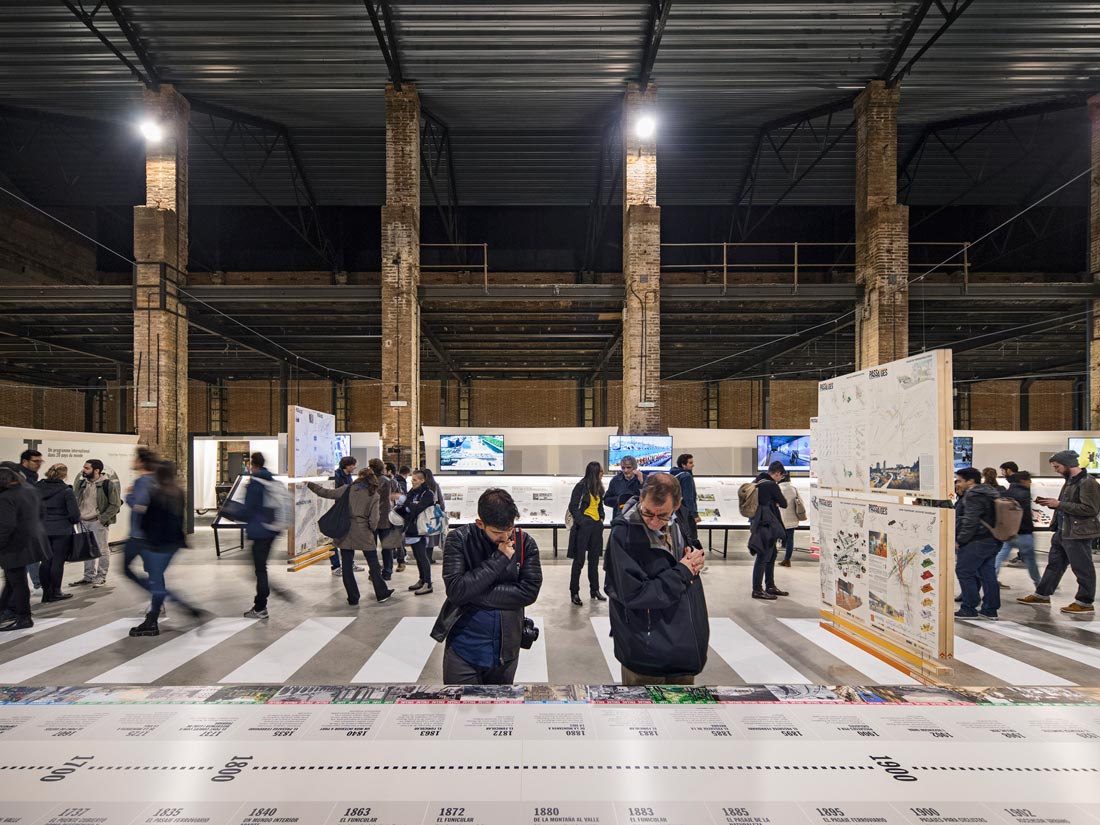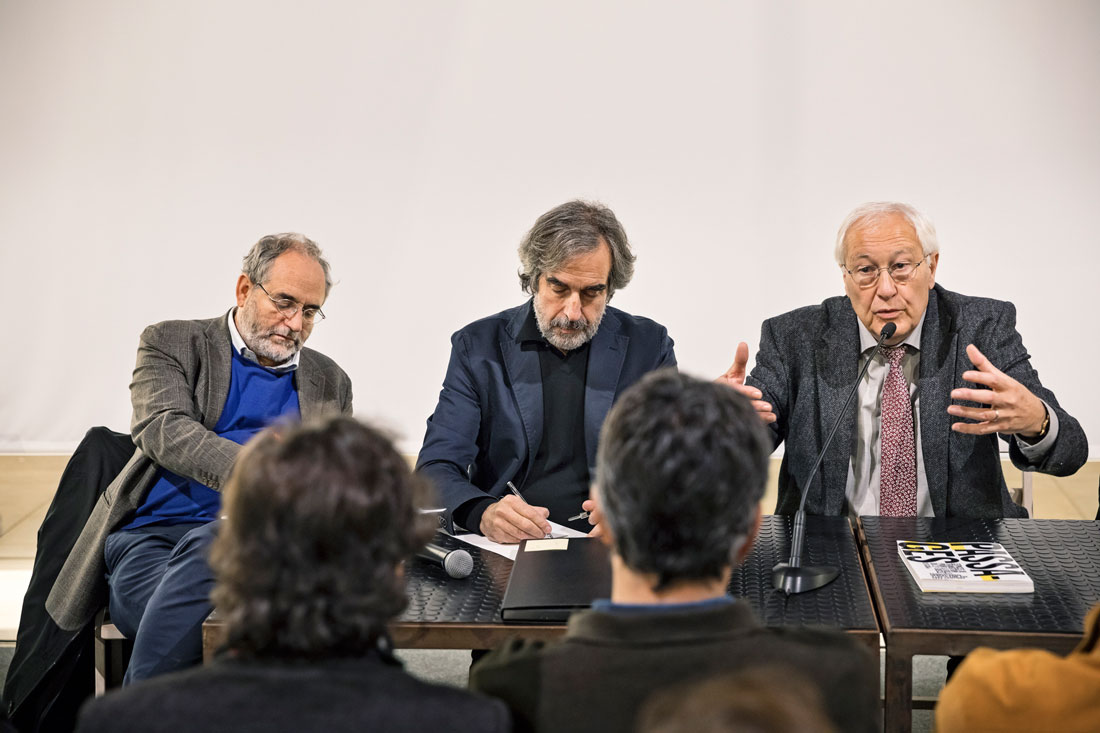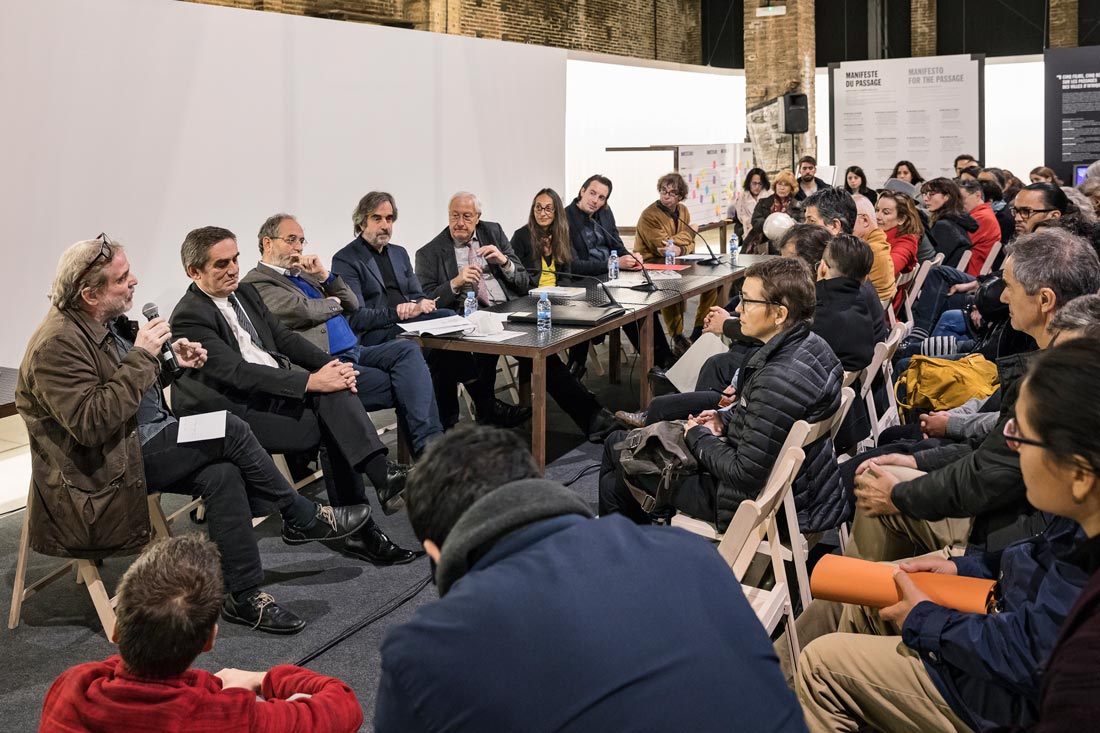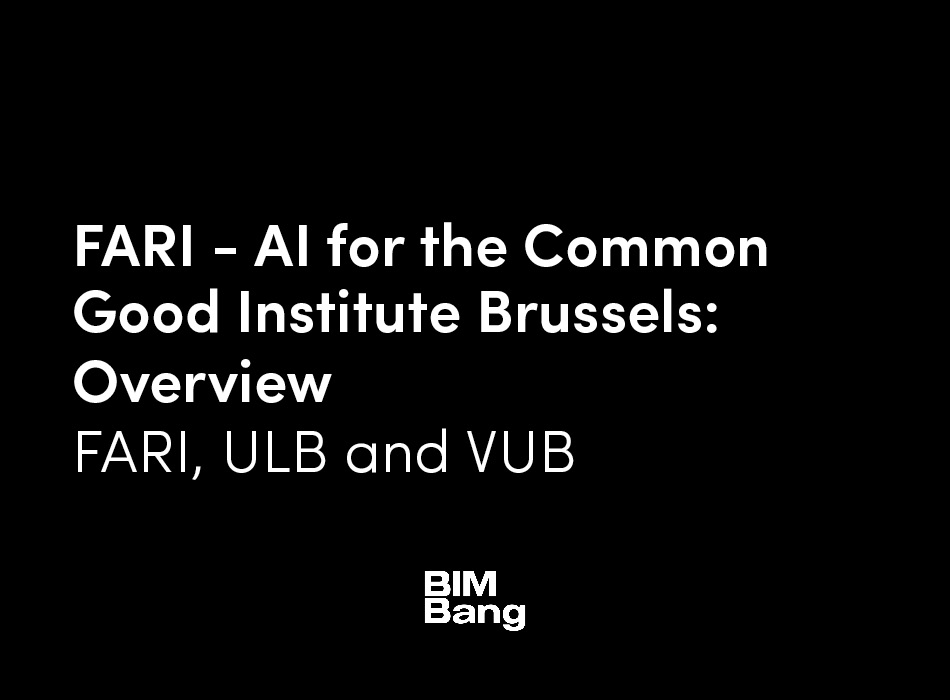At a time when mobility has moved to the heart of urban priorities, each of us is expected to demonstrate our skills as online navigators, shifting from one mode of transportation to another, covering various distances on a day-to-day basis, in metropolitan areas that are fragmented by large networks, fast infrastructures, specialized zones.
Our day-to-day experience is made up of journeys—slow and fast—on foot, in mass transit, in motor vehicles, by bicycle, to access the resources that urban life offers, whether close by or across the city. They impose changes, breaks, obstacles to be negotiated, often a choice between discomfort or not traveling at all. Our bodies, basic units of mobility, are subjected to stress, fatigue, anxiety. Passages, as small transitional spaces, are essential links in a mobility that is sustainable. Tunnels, footbridges, escalators, urban funiculars, corridors that facilitate transition between modes, between urban ambiences… History and the observation of how they are used show us that they are potentially a source of particular kinds of urban character, of ambiences, activities, qualities. The word “Passage”, in its semantic diversity (philosophical, temporal, spatial, musical, literary), reflects this clearly.
However, these spaces of accessibility are often neglected in the production of our cities, though they require little investment, and should be a natural part of any big development operation—in particular new transportation projects— possessing the capacity to repair the fractures introduced by rapid transit infrastructures and 20th-century zoning practices. Locally, passages can be designed and built without the need for long delays, laying the foundations for more large-scale transformations: “The small-scale that changes everything, or almost everything.”
Since its foundation, City on the Move has worked to draw attention to the crucial importance of the quality of mobility spaces. Spaces of intermodality and transit (stations, interchange hubs) and of ows (street sharing) offer opportunities to establish new urban locations and new mobility practices that combine information and the use of different modes suited to the circumstances, the city’s timeframes and the purposes of travel.
This volume, focusing on the contemporary design of passages, is also the catalog of the exhibition staged in Paris for the rst time in May 2016, and now touring the world. It is the fruit of a collective effort led by IVM since 2013, with a network of experts from different disciplines, of partner cities, of universities in China, in Latin America, in Europe, in Africa, and in Canada.
Drawing on a fund of knowledge on barriers within the contemporary city, this program has reached a common definition of passages as crucial spaces in our modern world, anchored in specific urban situations and cultures. By initiating projects and real-world implementations, it has raised awareness among stakeholders, whether public or private, of the urgency of moving away from a purely technocratic approach. This book is an encouragement to think about small spaces of movement as guarantees of mobility for individuals and a way to open up isolated neighborhoods, as spaces of compromise between local people and passers-by, between sometimes opposing interests. It is a call for new— small-scale—modes of negotiation and governance to be devised and implemented. It takes the form of a panorama of references drawn from all around the world, presents new examples based on real-world implementations developed by IVM, and proposes methods of action.
It seeks to demonstrate that there is no single reproducible model but only ad hoc solutions, approaches which—because they recognize the complexity of practices, situations, techniques, and forms of governance—can be shared.
The articles that punctuate this catalog of images and commentary propose an interpretation of passages in their historical, spatial, social, and sensory dimensions, as well as from the perspective of emerging mobilities and citizen aspirations. By focusing on particular geographical or cultural situations (China, Latin America, Barcelona Metropolitan Area), Andrés Borthagaray, Carles Llop, Camille Bianchi, and Daniella Urrutia describe ways of tackling the question of passages as tools that may be useful for the development of more ambitious urban projects.
The article by Marcel Smets that introduces this volume lays the foundations of the approach. After the inventory of contemporary urban barriers drawn up by Pascal Amphoux and Carles Llop, a chronological history (Marcel Smets) accompanies the overview of world passages, defined as link, place, and transition (Maarten Van Acker). In an era when users of passages demand attention and quality, Jean-Pierre Orfeuil places the question of passages in the context of the new mobilities. Then, Marcel Smets and Didier Rebois analyze recent productions that demonstrate that it is possible to “give passage” differently. Coordinated by Yuna Conan, IVM’s overall actions—professional architecture and urban design competitions, short films, workshops, and academic studies—are listed in detail in the final section.
Like the Exhibition, this book concludes with the Manifesto for the Passage, a call for innovation backed by all the contributors to this venture: the politicians and technicians who have supported competitions in their cities and are now overseeing their implementation; transportation forms and operators keen to break free of purely technical approaches; citizen groups; all the universities, teachers and students who have produced knowledge, culture, and plans; the experts who together steered the program and exhibition, under the scientific oversight of Marcel Smets, and wrote the analytical articles; finally, designers all around the world, in particular the young professionals who took part in the competitions.
Our warmest thanks go out to all of them.





